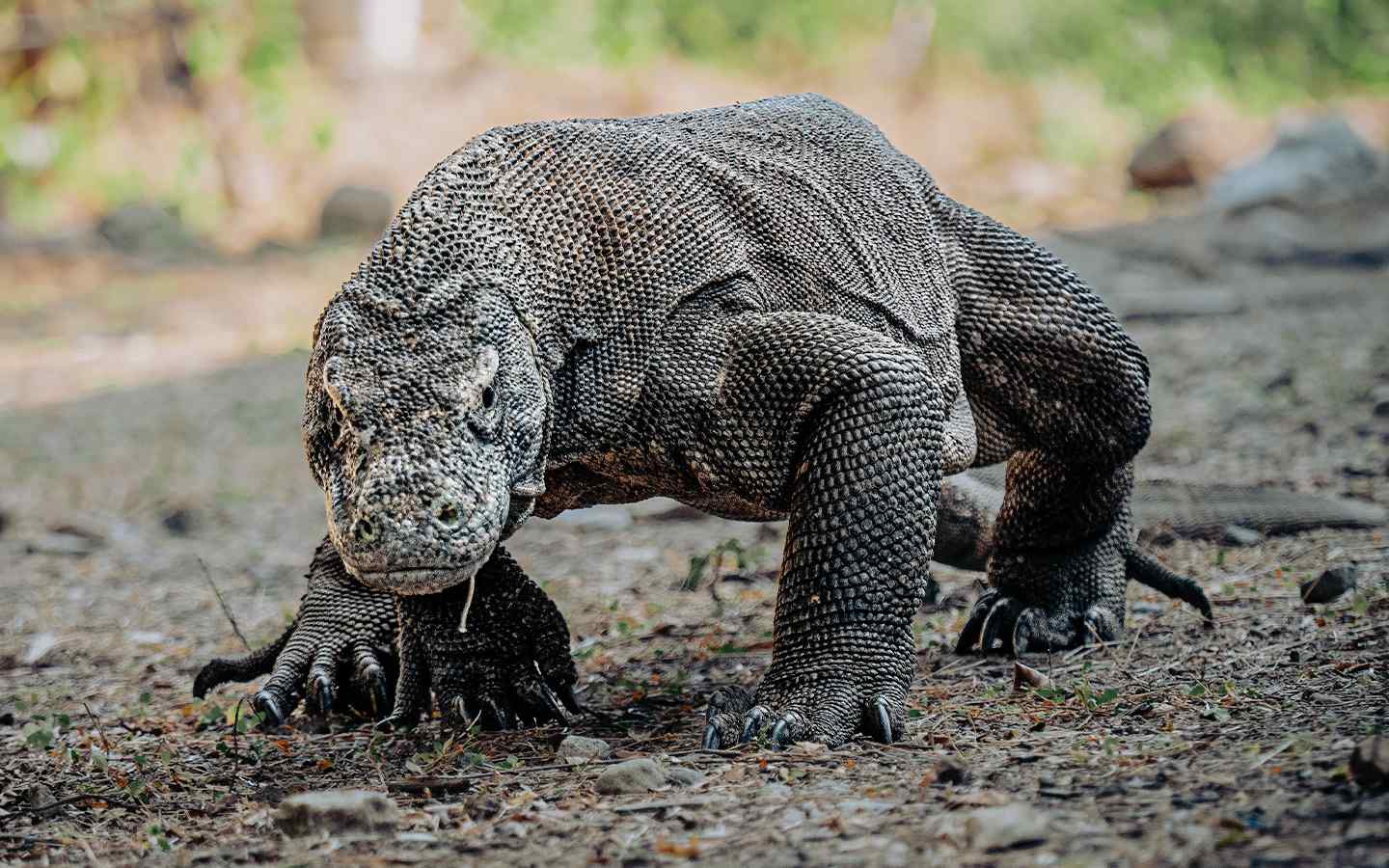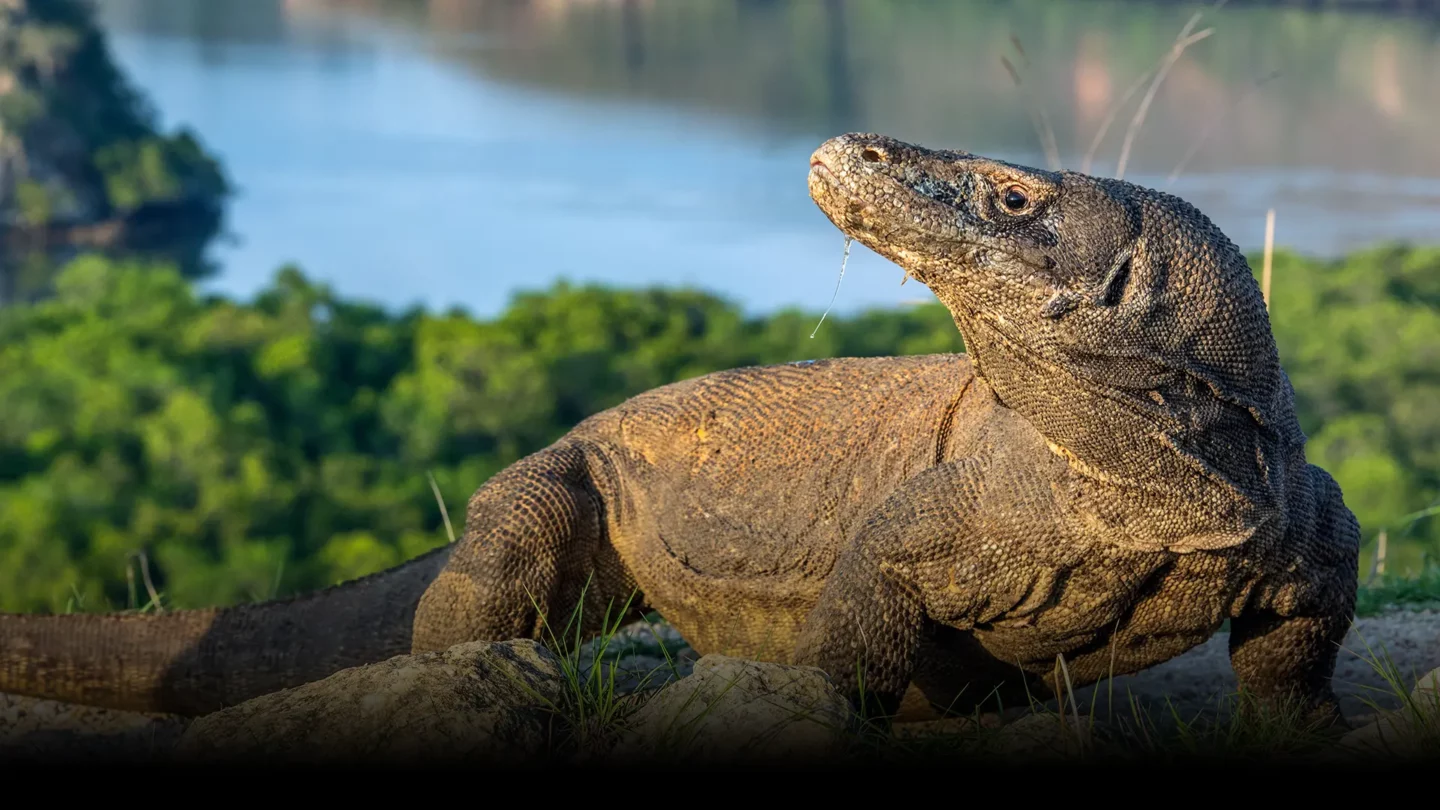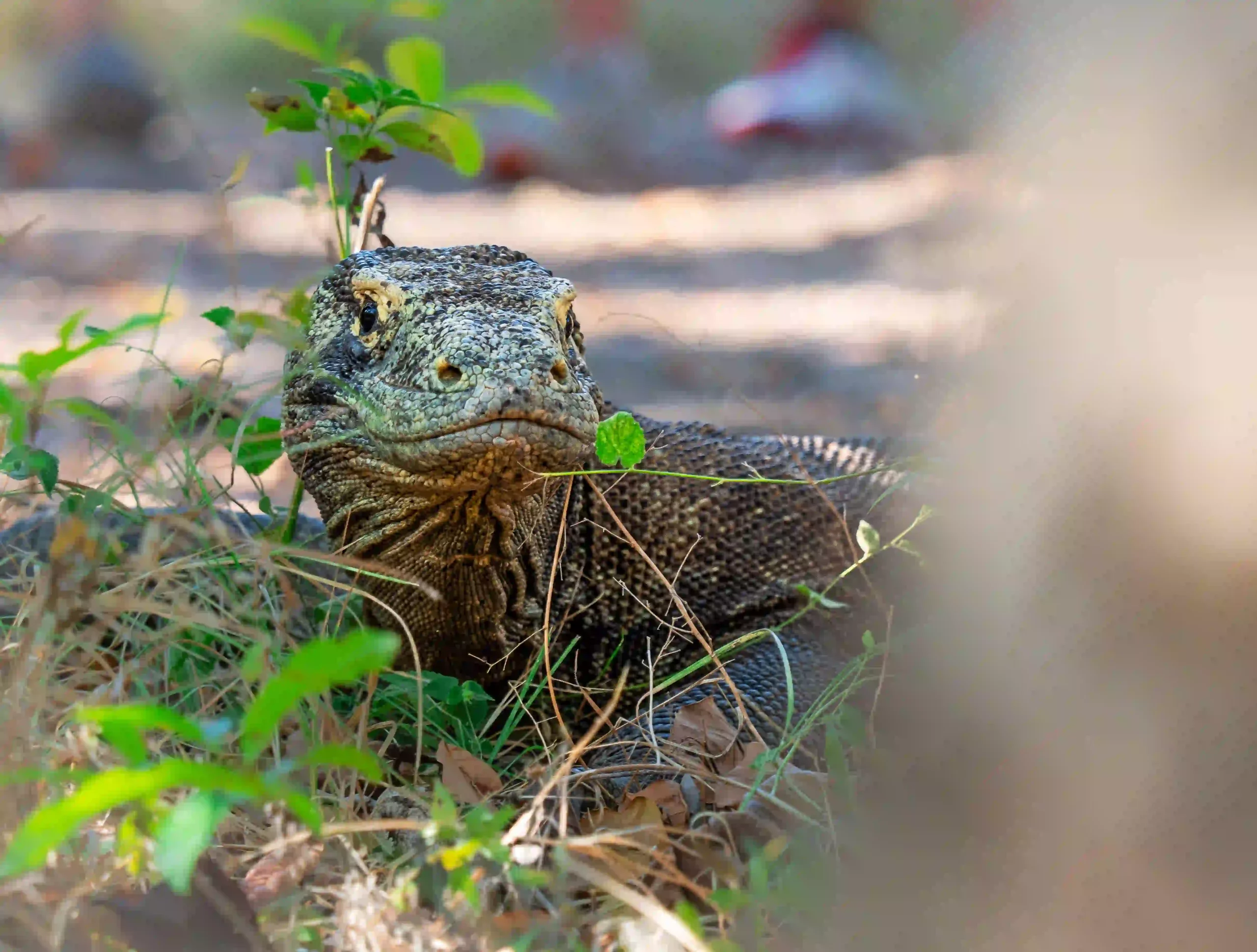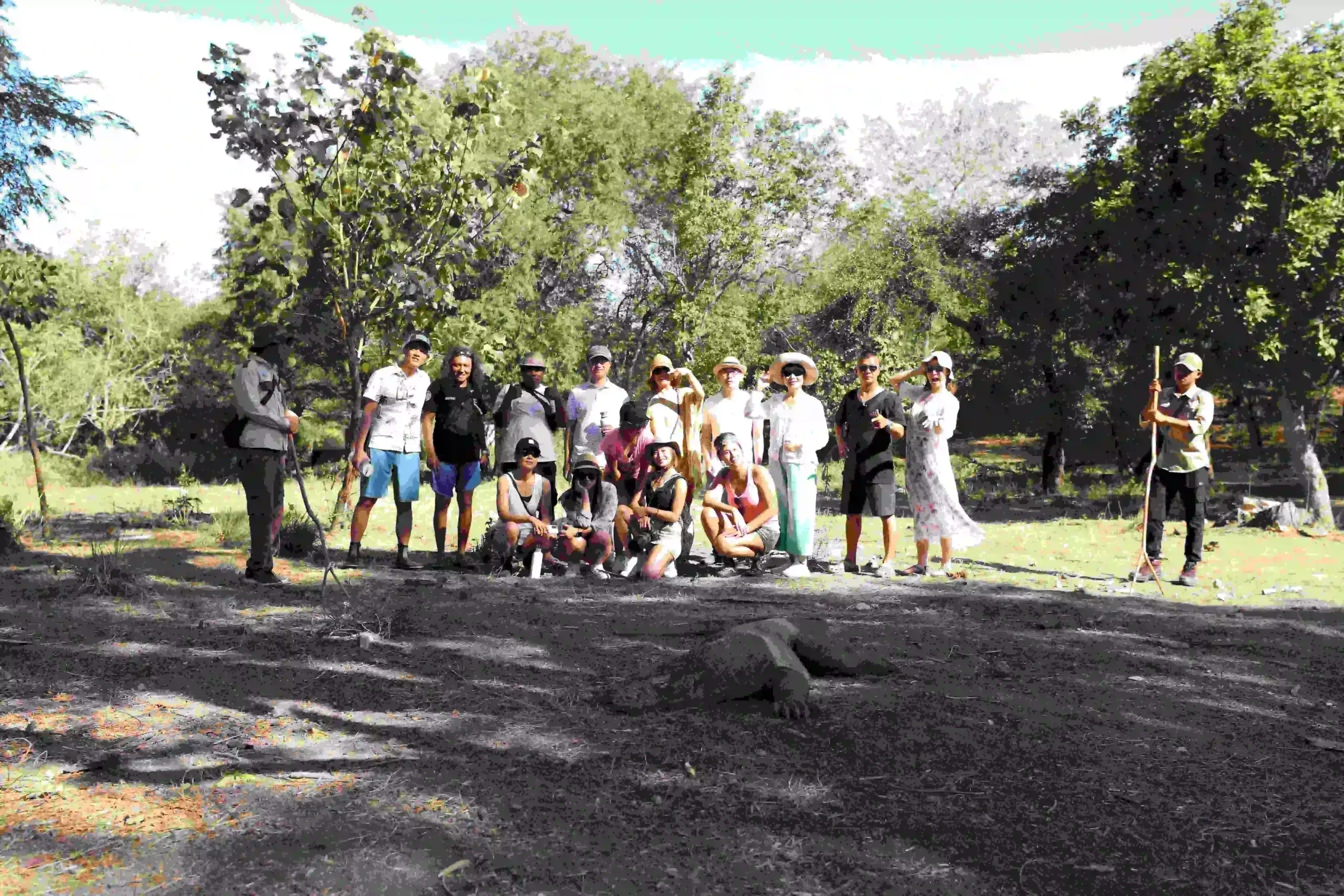The Komodo Dragon is a fascinating creature that has been around for millions of years, earning its nickname as the “last living dinosaur.” So what type of animal is it? It’s a massive lizard, native to the Indonesian islands in the Komodo National Park and can grow up to 3.3 Meters (10 feet) in length and weigh over 75 kilograms (150 pounds).
Table of Content
- Predators: Who Hunts the Komodo Dragons?
- Lifespan: In the Wild & Captivity
- Komodo’s Reproduction
- Facts About Komodo Dragons
- The Komodo Dragon’s Habitat
- Conservation Status
- Conservation Efforts
- Threats to Their Survival
- Preserving the Komodo Dragon
Predators: Who Hunts the Komodo Dragons?

In their habitat, there are no natural predators to Komodo Dragons. Adult Komodo dragons sit comfortably at the top of the food chain.
For the juveniles though, when they hatch, they’re vulnerable. They’re about the size of a shoe and are prey of basically everything: birds of prey, snakes, feral dogs, even adult Komodo dragons. Yes, they are cannibals, which is why the youngsters bolt for the trees the moment they emerge.
Furthermore, the Komodo dragon faces various threats to its survival. Human activities, including habitat loss, poaching, and conflicts with local communities, continue to endanger their existence. Climate change also poses a significant threat, impacting the delicate balance of their ecosystems and further jeopardizing their future.
Lifespan: In the Wild & Captivity

In the wild, Komodo dragons can live around 30 years, though most won’t make it that far. Between predation as juveniles, natural challenges, and their own brutal lifestyle, it’s survival of the fittest in the truest sense.
In captivity, with consistent food and medical care, they might push a little longer.
Komodo’s Reproduction
Mating happens between May and August, usually following a fierce wrestling match between males to determine dominance. The winner gets the right to court a female, who may or may not be receptive. And if she is, she lays up to 30 eggs in a burrow or inside an abandoned megapode nest.
Here’s where it gets weird: Komodo dragons are capable of parthenogenesis. This means that females can lay fertile eggs without mating. It’s nature’s emergency backup plan, perfect for isolated island populations.
Eggs incubate for about 8 months, hatching in April when food is relatively abundant. Hatchlings are immediately on their own, and as mentioned earlier, they sprint for the trees or risk becoming someone else’s lunch.
Facts About Komodo Dragons
Unique Hunting Behaviour
One of the most remarkable features of this ancient reptile is its unique hunting behaviour. They will patiently stalk their prey for an extended period before launching a sudden and deadly attack, using its strong legs and muscular tail to swiftly close in on its target.
They are Carnivores & Cannibals
Interestingly, the Komodo Dragon has also been observed to exhibit cannibalistic behaviour, further highlighting its primal instincts.
In fact, seeing a Komodo eating another one of its own species is what inspired divers to name the famous dive site “Cannibal Rock” in Horseshoe Bay, southern Rinca Island.
As carnivorous predators, Komodo dragons feed on a variety of prey, including deer, wild boar, and water buffalo. They are also known to scavenge on smaller mammals and birds. Their impressive hunting and feeding behaviours reflect their status as apex predators in their habitats.
Read Also: Are the Komodo Islands Worth it?
Excellent Swimmers
Despite its large size, the Komodo Dragon is also an adept climber and swimmer, adding to its prowess as a predator.
Excellent Sense of Smell
Their sense of smell is highly developed, allowing them to detect prey from several kilometres away. It is that good, that Komodo mainly hunt by using their sense of smell even though they have an excellent level of eyesight and hearing.
Furthermore, they are using their tongue to sense the smell in the air and detecting the direction where it come from. This way, they know what’s up in a range up to five miles away.
The Komodo Dragon’s Habitat

The Komodo dragon is native to a few Indonesian islands, including Komodo, Rinca, Flores, Gili Motang, and Padar. Their natural habitat includes tropical savannas, grasslands, and forests where they can find ample prey and suitable nesting sites.
These remarkable reptiles are well adapted to their environment and play a crucial role in their ecosystems. So now that we have answered the question where the Komodo Dragon from is, let’s look at some other cool stuff like their diet.
Climate
The climate Komodo Dragons live swings between extremes. From April to November, the sun rules; ruthless and unrelenting, driving the land to dust. Then comes the rainy season, dumping torrents that turn trails into mudslides and bring the landscape briefly back to life. The dragons? They thrive in both. Survivors through and through.
Habitat Types
You’ll find Komodo dragons across a mix of habitats: arid savannas, open grasslands, deciduous forests, and mangrove swamps. Each one serves a purpose; hunting ground, hideout, nesting site.
Preferred Areas
They may roam wide, but dragons have their favorite haunts. They prefer dry valleys and open, grassy savannas where prey is easy to ambush.
Watering holes are their prime hunting spots; deer and wild boar can’t resist them. And when it comes to nesting, females seek out soft, undisturbed soil; often repurposing megapode mounds to bury their clutch like treasure in the earth.
Read Also: Diving Season & The Best Time to Visit Komodo
Conservation Status
Due to habitat loss and human encroachment, the Komodo dragon is listed as vulnerable by the International Union for Conservation of Nature. Efforts are being made to protect their natural habitats and promote conservation initiatives to ensure the survival of these magnificent creatures.
Conservation Efforts
Conservation efforts for the Komodo dragon have been implemented to protect this iconic species. As of 2021, the Komodo dragon is classified as Endangered by the IUCN, facing increasing threats from rising sea levels and habitat encroachment.
The establishment of protected areas, such as Komodo National Park, has been crucial in safeguarding their habitats.
Additionally, educational programs and initiatives aimed at raising awareness about the importance of preserving these reptiles have been instrumental in garnering support for their conservation.
Preserving the Komodo Dragon
Preserving the Komodo dragon is not only essential for maintaining biodiversity but also for understanding the complexities of natural ecosystems.
As a top predator, the Komodo dragon plays a pivotal role in regulating the populations of its prey species, contributing to the overall health of its environment.
Furthermore, their unique characteristics and behaviours offer valuable insights for scientific research and wildlife conservation efforts on a global scale. Efforts to Safeguard the Komodo Dragon’s Future
To address the various threats to the Komodo dragon’s survival, comprehensive measures are being taken to safeguard their future.
One crucial aspect of conservation involves collaborating with local communities to mitigate human-wildlife conflicts and promote sustainable coexistence.
By engaging residents in conservation initiatives and providing alternative livelihoods, efforts are being made to reduce the pressure on the Komodo dragon’s habitats.
Furthermore, research and monitoring programs are essential for gaining a deeper understanding of the Komodo Dragons behaviour, population dynamics, and response to environmental changes.
This knowledge forms the basis for tailored conservation strategies aimed at addressing specific challenges faced by the species.
Additionally, international cooperation and support play a vital role in ensuring the long-term protection of the Komodo dragon, transcending national boundaries to address threats that extend beyond the species’ range.
Read Also: Are the Komodo Islands Worth it?
Beyond its Habitat

The significance of preserving the Komodo dragon extends beyond its immediate habitat, as it serves as a flagship species for conservation in the region.
By safeguarding the Komodo dragon, the unique ecosystems of the Indonesian islands are also protected, ensuring the survival of diverse flora and fauna that depend on these habitats.
In conclusion, the preservation of the Komodo dragon is of paramount importance not only for the species itself but for the holistic well-being of its environment and the invaluable contributions it offers to ecological research and conservation efforts.
Through concerted and coordinated actions, the future of these magnificent creatures can be secured for generations to come.

